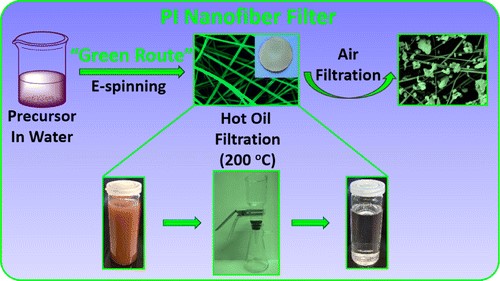News
Polyimide Nanofibers by “Green” Electrospinning via Aqueous Solution for Filtration Applications
28.07.2016
Polyimide Nanofibers by “Green” Electrospinning via Aqueous Solution for Filtration Applications
Shaohua Jiang, Haoqing Hou, Seema Agarwal and Andreas Greiner ACS Sustainable Chem. Eng., 2016 4(9), 4797-4804.

The use of large amounts of environmentally unfriendly, toxic, and flammable organic solvents in electrospinning of polymers puts demand on the development of new methods and formulations for making water stable hydrophobic nanofibers from water-soluble precursor solution. Electrospun polyimide (PI) nanofibers are of particular interest for a variety of applications due to their extraordinary thermal and chemical stability. However, the intermediate precursor of polyimide, the polyamic acid (PAA) has to be electrospun from harmful solvents like dimethylformamide (DMF) which is a serious obstacle for technical applications of electrospun PI. This work highlights the formation of PI nanofibers by “green” electrospinning of ammonium salts of PAA from water. The high temperature used for imidization in the second step also removed ammonia and the template polymer by sintering giving PI nanofibers with diameter 295 ± 58 nm. The thus obtained PI nanofibers by “green” electrospinning were defined as “green” PI nanofibers. Aerosol filtration of “green” PI nanofibers showed a performance that was very similar to PI nanofibers obtained by electrospinning of PAA from DMF. Additionally, it has been shown that the “green” PI nanofibers were suitable for the filtration of hot oil as well.

